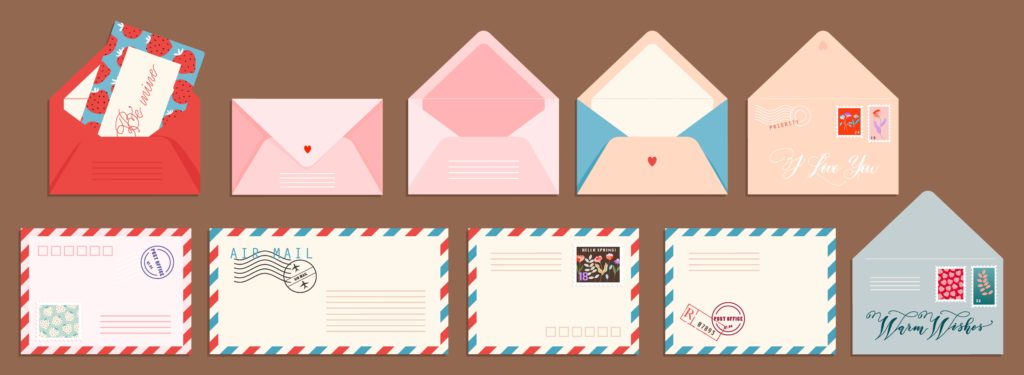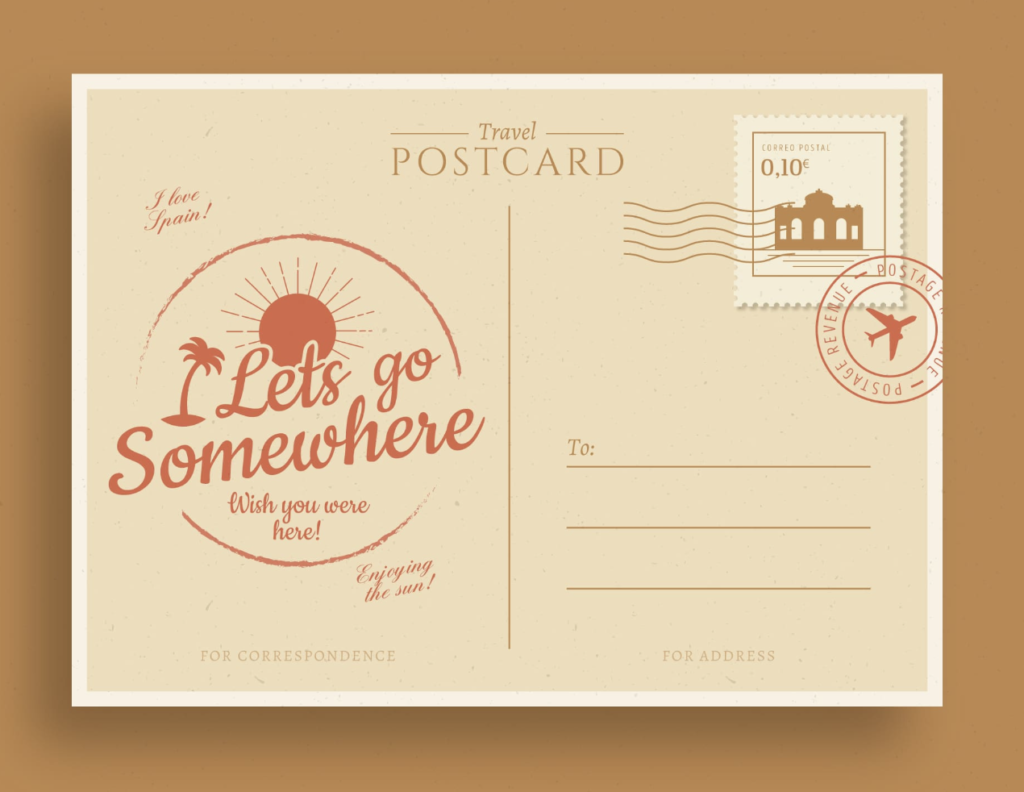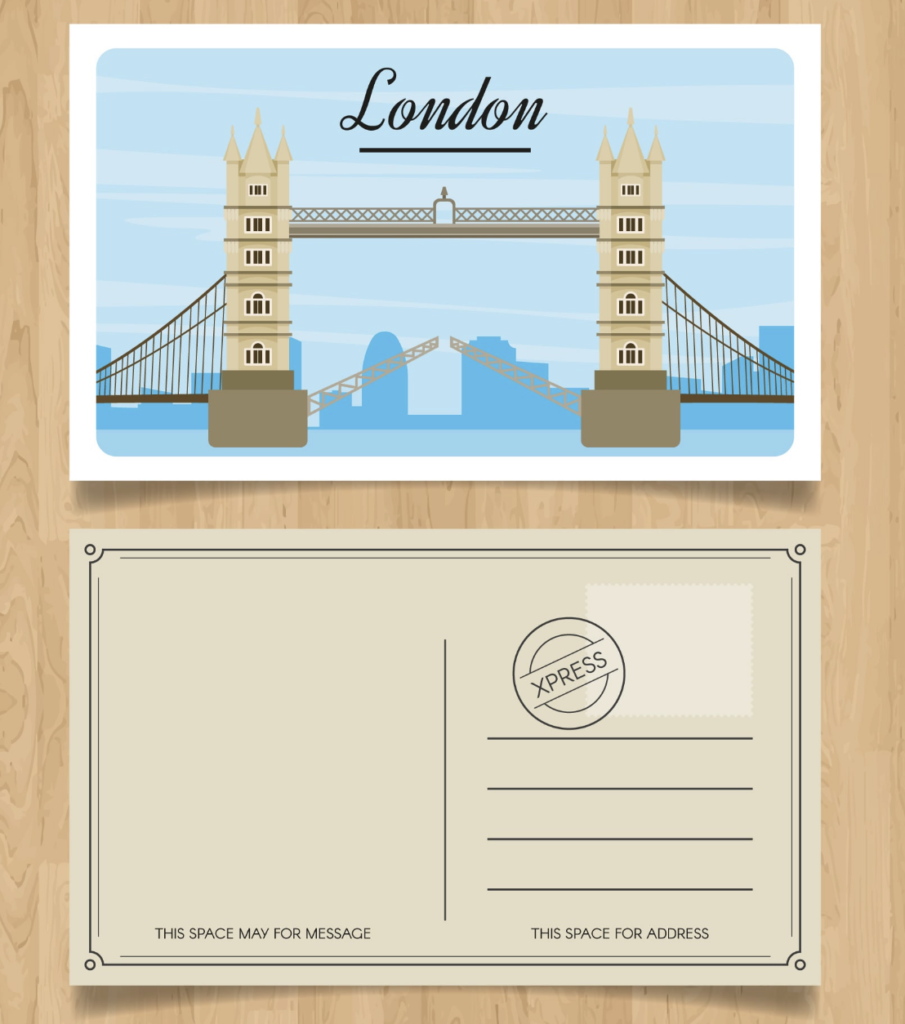
You may be wondering how to write a postcard that resonates with your target audience and helps you grow your business. Don’t worry. We have you covered.
Postcards are a great way to increase awareness of your brand, build credibility, and generate sales. Leaving your customers with something tangible is always a good idea. So, let’s dive right into it.
What we’ll cover in this article:
- Know your audience before you start writing a postcard
- Does a postcard need an envelope?
- Personalize postcards to connect with your audience
- Don’t forget the main message
- Choose the right postcard dimensions
- Stamp or a better way?
- Send your postcards like never before
- Send Postcards domestically across the United States and Canada
- Track your postcards with Postalytics
Know your audience before you start writing a postcard
The first step in the writing process is to understand your audience. Ask yourself, ‘who am I writing to?’ and keep that person in mind. Your business probably has ideal customer personas, so tapping into that profile is a good practice. If you don’t have a persona in mind, block some time today to create one.
Think about their worries, limitations, and dreams. How do they talk? How comfortable are they using technology? How can you make your postcard easy for them to use? Can you help them overcome a problem? Can you inspire their dreams?
Answer these questions before writing and designing your postcard.

Does a postcard need an envelope?
Before we dive into the contents of a postcard, let’s see if postcards need an envelope.
The answer is no. Postcards don’t need envelopes. However, it will require an envelope if it’s mailed as a letter (with any item other than a postcard). With Postalytics, you can customize and personalize your envelope for dramatic impact and better visibility. For example, marketers personalize their campaign this way to stand out from general mail in white or brown envelopes.
Personalize postcards to connect with your audience
Make the postcards all about him, her, or they.
You may begin your postcard with a warm greeting. By doing so, you will give your postcard a letter-like feeling. You should write the greetings on the left side of the postcard and leave enough space below them for the message.
A formal postcard may start with “Dear, respected, etc.,” while an informal one may begin with “Hello, etc.”.
Think about how you can personalize the postcard even further. Harness the power of personalized links.
pURLs (personalized URLs) are URLs that are customized to include additional information about your business, holiday, or something else that can fit behind a link. They’re used to track the success of marketing campaigns and can be used to collect leads or drive traffic to a website. Overall, pURLS help deliver a hyper-personal message to your recipients, which is often the tipping point in connecting with a recipient.
Don’t forget the main message
This may seem like an obvious one, but you would be surprised at how many people forget to write their main message on postcards.
Personalize it for your recipients, but don’t forget that you also want to share something with them. Writing a postcard is an opportunity to communicate your expertise, so don’t miss the chance to do that by forgetting your main message.
Use clear, concise language. Keep your postcards simple to read.

Choose the right postcard dimensions
Whether you’re using postcards in 4×6 (101.6mm x 152.4mm), 6×9 (152.4mm x 228.6mm), or 6×11 (152.4mm x 279.4mm), depends on your budget, message length, and your audience.
Ask yourself how many people will receive this postcard? How much space do you have to fill? How deep should your content be? How much information does your audience need to know about the product or service you are promoting or explaining?
If you have a shorter message, then a smaller card is likely the best option. On the other hand, if your audience needs more information about what you’re sharing, or if it’s a product or service that’s complicated and/or expensive, then a larger postcard may be a better fit.
At Postalytics, we recommend using a 4×6 postcard if you have a shorter message and less information to share or for an audience that is new to your brand.
After you’ve written, designed, and chosen the dimensions, it’s time for the next step.
Stamp or a better way?
A postcard cannot be sent without a stamp. Make sure the stamp is placed where it should be. It is usually located in the top right corner. Stamps can be purchased at various locations such as post offices, banks, or even gas stations. They can also be ordered online.
However, you can harness the full extent of owning a free Postalytics account, and let us take this time-wasting task off your plate. Simply focus on your recipients and your message, and let us take care of the rest. We’ve blocked the sensitive areas in our postcard editor so that every postcard you send actually leaves the post office.

Send your postcards like never before
Once you have finished writing your postcard, put it in an envelope and send it away. Sure, you can use this old-school way of sending out postcards. It probably even feel enjoyable sending one or two and having a reason to stroll down to the post office.
But can you send postcards en mass this way? What if you have to send 10,000 postcards by the end of the day? There’s only one way to do this.
You can use our bulk sender to send your postcards in a matter of minutes. Once your campaign is designed, written, and shipped, you can track every step and turn from your dashboard using our unique analytics tools.
Send Postcards domestically across the United States and Canada
With Postalytics, you don’t need to ship across the border to reach your Canadian or your US-based recipients. We have partnered with Canada Post and USPS to streamline the delivery process. Fill out your postcard, just like you would, and choose your country of destination.
We then work with our printers and local delivery service to slash your cost of sending mail. Forget about sending a postcard from a totally different country to Canada or the United States.
Track your postcards with Postalytics
Do you know you can track every step of the way your postcard makes on its way to the final destination? Yes, you can track every step and turn. And If you don’t know, now you know.
For marketers, direct mail tracking has several advantages. Stop breaking your head with the following questions.
How many people actually receive the postcard? How many of them opened it up and looked at it? How long did they keep it for before throwing it away? How many new accounts you’ve created as a result of your campaign?
Forget about guessing. With Postalytics, you can monitor every step of your marketing process.
About the Author

Dennis Kelly
Dennis Kelly is CEO and co-founder of Postalytics. Dennis joined Boingnet, the predecessor to Postalytics, in 2013. Boingnet was focused on providing print and direct mail marketing service providers the ability to add digital marketing channels to their direct mail campaigns. Postalytics is Dennis’ 6th startup. He has been involved in starting and growing early-stage technology ventures for over 30 years and has held senior management roles at a diverse set of large technology firms including Computer Associates, Palm Inc. and Achieve Healthcare Information Systems.

